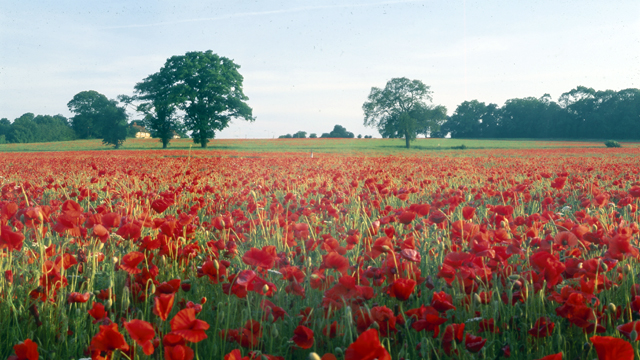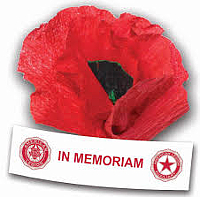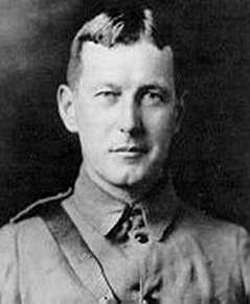
 |
The American Legion recognizes National Poppy Day this year on Friday, May 26, a day to wear a poppy to honor those who have worn our nation's uniform. All donations received are used by The American Legion for programs that support veterans, the military community and their families.
You'll see a lot of those poppies on hats or in lapels on Friday afternoon and evening across the country and at U.S. installations around the world, as American Legion, Veterans of Foriegn Wars and members of other patriotic organizations, joined by students, neighbors, civic and community groups and more, descend on the cemeteries where those fallen in battle lie, never forgotten, to place flags on the graves of those who died in service to their country and make ready for Memorial Day on Monday, May 29.
At the Memorial Day ceremony at Grandview Cemetery following the 10 a.m. parade in downtown Bonners Ferry Monday, you'll notice a lot of Canadian uniforms and insignia, and properly so. They are not only our close international neighbor, but her armed forces and ours have stood side by side in battle for well over a century, and many of our traditions are bound together inseparably.
Take the poppies, for instance, which hearken back to World War I.
The Second Battle of Ypres was fought from April 22 to May 25, 1915, for control of the strategic Flemish town of Ypres in western Belgium after the First Battle of Ypres the previous autumn.
On both sides, 122,223 fell; dead, wounded or missing.
It was the first battle of the war marked by Germany's mass use of poison gas on the Western Front, and despite this, for the first time, a former colonial force, the 1st Canadian Division, defeated a European power, the German Empire, on European soil.
 |
| Lieutenant Colonel John McCrae, MD |
He was born November 30, 1872, in Guelph, Ontario, and died January 28, 1918, in Boulogne-sur-Mer, France.
On May 2, 1915, McCrae’s close friend and former student Alexis Helmer was killed by a German shell.
That evening, in the absence of a Chaplain at the battlefront, McCrae recited from memory a few passages from the Church of England’s “Order of the Burial of the Dead.”
For security reasons, Helmer’s burial in Essex Farm Cemetery was performed in complete darkness.
The next day, May 3, Sergeant-Major Cyril Allinson was delivering mail. McCrae was sitting at the back of an ambulance parked near the dressing station beside the Yser Canal, just a few hundred yards north of Ypres, Belgium.
McCrae was writing his "In Flanders Fields" poem as Allinson silently watched.
He later recalled, “His face was very tired but calm as he wrote. He looked around from time to time, his eyes straying to Helmer's grave."
Within moments, McCrae had completed the poem and without a word, he took his mail and handed the poem to Allinson.
Allinson was deeply moved.
“The (Flanders Fields) poem was an exact description of the scene in front of us both," he said. "He used the word 'blow' in that line because the poppies actually were being blown that morning by a gentle east wind. It never occurred to me at that time that it would ever be published. It seemed to me just an exact description of the scene."
| In Flanders Fields |
| By Lieutenant Colonel John McCrae |
| In Flanders
fields the poppies blow Between the crosses, row on row, That mark our place: and in the sky The larks still bravely singing fly Scarce heard amid the guns below. We are the dead: Short days ago, We lived, felt dawn, saw sunset glow, Loved and were loved: and now we lie In Flanders fields! Take up our quarrel with the foe To you, from failing hands, we throw The torch: be yours to hold it high If ye break faith with us who die, We shall not sleep, though poppies grow In Flanders fields |